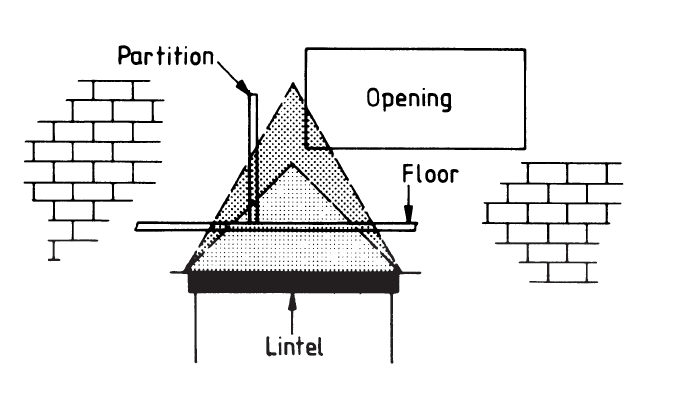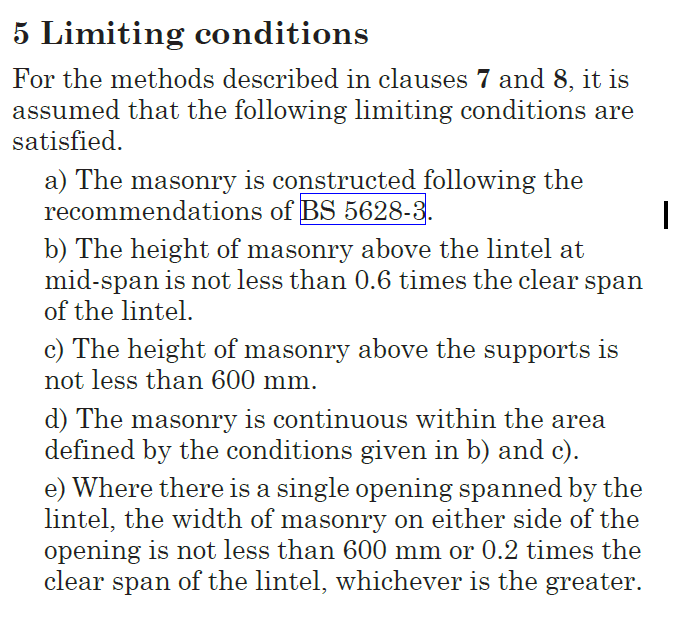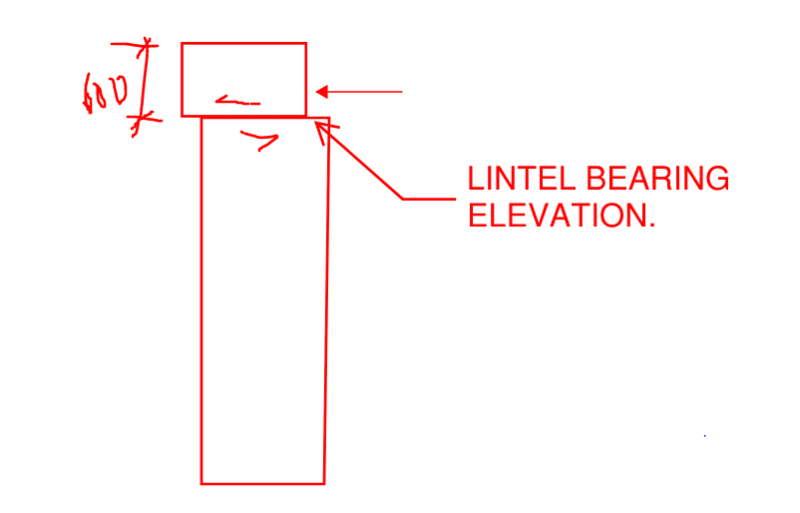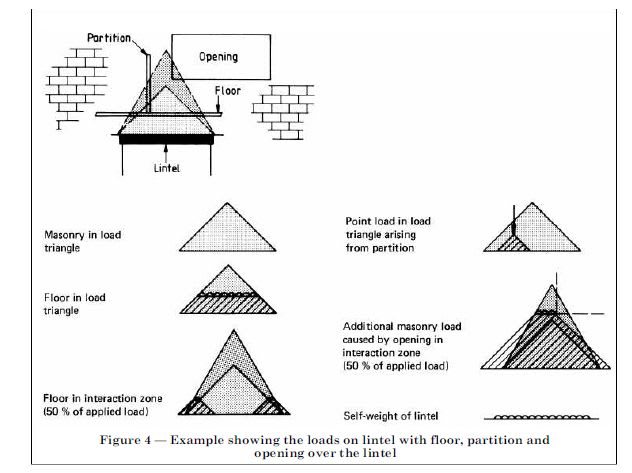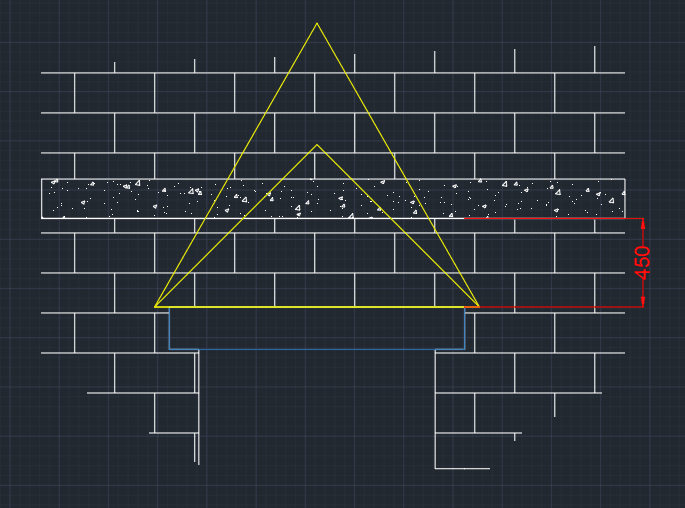- Clause c DOES NOT imply that the minimum distance between the lintel and the floor above should be 600 mm..but one of the limiting conditions described in clause
5 Limiting conditions
For the methods described in clauses 7 and 8
-BS 5977 Part 1 is for Lintels , Method for assessment of load and clauses 7 and 8 describe triangular load method which assumes that the masonry wall over an opening will arch over the opening and
loads outside the interaction zone is not considered .
- I have written the the clause 4.2 Assumptions For the methods described in clauses 7 and 8,
a) all the weight of the masonry within the load triangle is carried as a load on the lintel;
b) any point or distributed loads applied to the masonry within the load triangle are dispersed at 45° and carried by the lintel [see Figure 2(a)];
c) any point or distributed loads applied to the masonry within the interaction zone are reduced by 50 %, dispersed at 45° and carried by the lintel
[see Figure 2(b)];
d) the weight of masonry in the interaction zone is not carried by the lintel.
- You have posted some part of the fig 4 .. When you look to the remaining , i am sure you will get the point since pretty straight forward...I have attached below..
